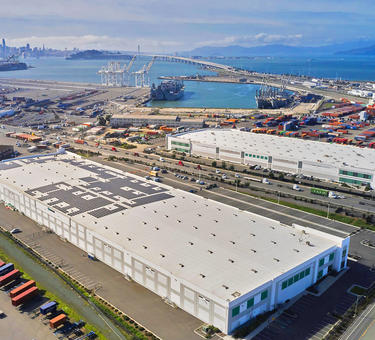
- Activity in U.S. warehouses grew through July, as reflected by a 60.6 reading in the Industrial Business Indicator (IBITM) Activity Index.i Both consumption and restocking activity boosted the flow of goods. High activity indicates the potential for increased competition for space as customers grow out of existing footprints.
- There are more choices, for now. Developers broke ground on 28% fewer speculative starts in Q2, compared to one year ago, which will increase the difficulty to find space in 2025 and 2026.i Elevated construction costs and interest rates, as well as challenges to secure the necessary approvals and permits, present ongoing headwinds to an acceleration in development starts.
- Rents diverged by location. In some markets, such as Southern California, rents continued to reset in Q2 while more than half of markets recorded further growth. With greater availability, 2024 is an optimal time to lease in many locations.i
The IBITM Activity Index increased to 60.6 in July from averaging 58.4 in Q2 as goods consumption was stable and inventories were restocked. IBI readings of 56-62 have been consistent with healthy consumer activity. Retail sales—excluding food, gas and auto—grew by 3%, compared to Q2 last yeari, fueled by increased nominal and real spending in electronics, apparel and motor vehicle parts. E-commerce outperformed, growing 8.6% year-over-year in Q2, compared to 1.2% for in-store sales. Cooling inflation relieved pressure on consumers, who benefited from positive real wage growth amid a still-tight labor marketii. In contrast to last year, businesses now view inventories as rightsized or even low. Ahead of peak season and possible disruptions later in the year, imports have been growing by double-digits, which point to increasing inventories in the second half of 2024.
The IBITM Utilization Rate ticked up to 84.9% in July with a quarterly average of 84.8% in Q2, still slightly below the long-term expansionary average of 85.5-86.5%.i Given a focus on productivity and cost control amid still-high uncertainty, many users are even more determined than usual to maximize existing space before expanding and committing to capital expenditures. Even as demographic, economic and supply chain momentum accelerates, the broader marketplace may experience modestly below-normal realized demand patterns as customers expand into their existing capacity. Net absorption, or new logistics space occupied, amounted to 46 million square feet in the second quarter—positive, but below a normal expansionary average of 60 million square feet.
Leasing activity is poised to increase as customers adopt smart growth strategies to expand their footprints and meet the needs of end consumers. Going forward, sustained retail sales growth and matched inventoriesii should lead to expansion as the small amount of excess capacity is soaked up. In Q2, leading indicators of growth—including customers in the market, proposal activity and the demand drivers detailed above—aligned with growing competition for space through 2024 and beyond. Putting cyclical and structural supply chain needs together, it is unsurprising e-commerce leasing accelerated while third-party logistics providers continue to rightsize. Our analysis suggests a run rate of 180-200 million square feet over the next 12 months.i
The end of the pandemic building boom is nigh, with incoming deliveries set to fall sharply in the second half of 2024. Approximately 70 million square feet of unleased space came online while only 46 million square feet of new speculative developments broke ground in Q2. As a result, the pipeline of unleased space under construction decreased by 12% compared to Q1’s recent peak.iv Going forward, customers will likely face dwindling options in many locations and size categories.
The vacancy rate is at peak, or will peak, in the next three to six months. Prologis Research expects net absorption of space to accelerate gradually while completions decrease by 42% in the second half of the year, compared to the first half, with low levels of new deliveries extending through early 2025 based on year-to-date groundbreakings. The vacancy rate should peak in the mid-6% in 2024, a low level relative to historical cycles, before decreasing in 2025.iv Rent growth should follow a similar trajectory, with select markets recording lower net effective rents through year-end before upward pressure returns in 2025. At the same time, more than half of markets are expected to see rents continuously climb at an accelerating pace.i
Conclusion
The logistics market is rebalancing after a period of rapid change, offering fresh growth opportunities for customers in key markets and size categories. The next phase of the cycle will see strategic absorption of high-quality space by customers, allowing them to meet underlying demand growth, adapt to shifting consumer habits, meet sustainability goals and navigate a less reliable global supply chain. The window of opportunity, however, may be brief due to the sharp decline in new supply and a macroclimate that suggests pent-up demand.
Customers who have already assessed their future supply chain needs are actively leasing. Strategic leasing in 2024 is crucial to capitalize on this stage of the logistics real estate cycle.


